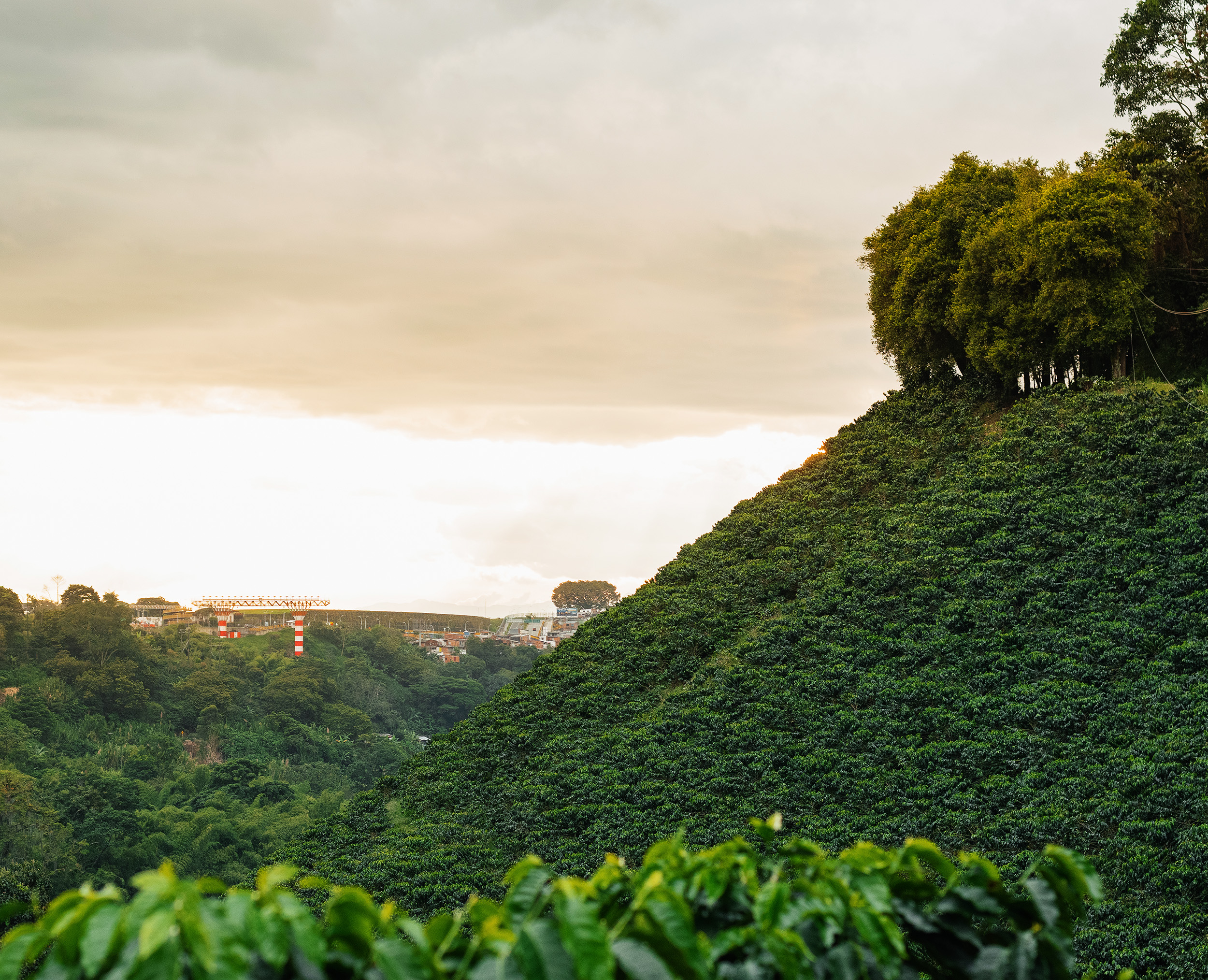From the 1950s onwards, as they came to recognise the limited potential of breeding programs relying exclusively on Typica و Bourbon, Colombian plant breeders and producers began introducing other varieties. The most important of these traditional varieties in Colombia today are Maragogipe و Caturra (Cenicafé 2015).
Caturra, a naturally occurring dwarf mutation of Bourbon, first appeared in Brazil in the 1910s and arrived in Colombia in 1952 (Cortina et al 2013). Its dwarfing mutation results in compact plants, allowing planting densities of up to 10,000 trees per hectare (Cenicafé 2015). The reduced height of the trees also makes Caturra easier to harvest by hand.
 As a dwarf variety, Caturra can be planted at very high density.
As a dwarf variety, Caturra can be planted at very high density.
While individual Caturra trees are less productive than Bourbon, their higher planting density enables a higher yield potential overall. In Colombia, Caturra produces an average of 3,375 kilograms of parchment coffee per hectare, whereas Bourbon produces 3,000 kilograms per hectare (Cenicafé 2015).
Caturra has had a huge impact on the coffee industry, allowing the development of high-density, full-sun plantations (World Coffee Research 2022) and proving to be invaluable in breeding programs. Caturra was especially useful to Colombian farmers, as it is well adapted to growing in regions subject to year-round rainfall (Cortina et al 2013).
Because of these advantages, the FNC distributed Caturra seed throughout Colombia during the 1960s, encouraging farmers to replace existing ageing trees with the new variety (Gordillo 2005).
Other varieties derived from Caturra, such as Villa Sarchi و Pacas, also grow in Colombia in small quantities. Catuaí, a highly productive cross between Mundo Novo و Yellow Caturra from Brazil,